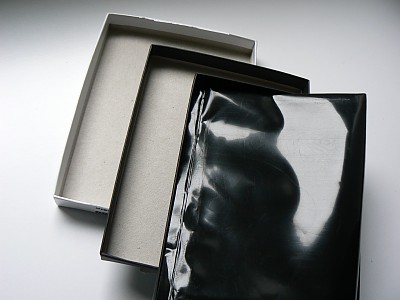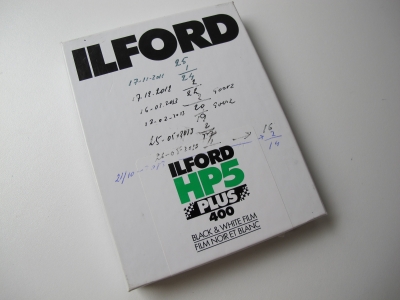It is a good idea to make yourself
familiar with loading sheet film into a film holder. As said it has to be
done in completely darkness and if you don't have a darkroom, you may work
with a portable darkroom tent or build one out of wood. Darkroom tents can
be found on eBay.
Daylight testing - eyes wide open
1) to practice start with a sheet of film (old
useless negative) with open eyes in daylight.
Open dark slide by sliding one of both dark-slides partly out of the holder.
Open the rear hinged bottom slot and slide the sheet film with the notches
on the right side up into the guides and move the sheet film all the way up
until it stops. Close the hinged slot and slide the dark slide down into its
position.
Loading.
Take one of your film sheet holders and
clean the inside from dust. The holder is equipped with two dark slides.
Each of them with a white or metal top and a black top to distinguish if
the film has been exposed or not. Make sure that the white or metal side is
up.
If the silvered or white side is up, you know that the film is unexposed.
After exposing you should turn the dark slide around and the black side
will be on top.
This is to prevent double exposures.
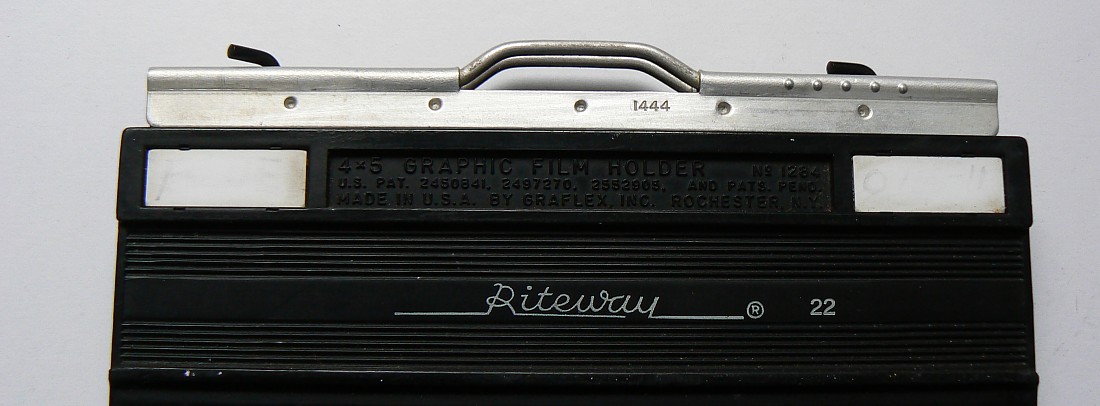
The following procedure has to be done in
total darkness.
Draw the dark slide
with the silvered top halfway out of the holder. You may have to turn the
safety lock hook on top of the holder first.
Take a sheet film out of the
package in full darkness.
Open the hinged bottom
slot of the
dark slide and slide the sheet inside the holder between and below the
guides.
Make sure that you insert
the corrugated side on the right side up into the open holder.
That means the notches on the right
side up see picture on the left.
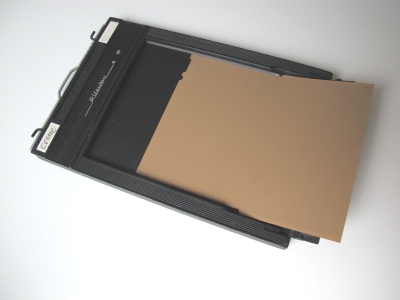

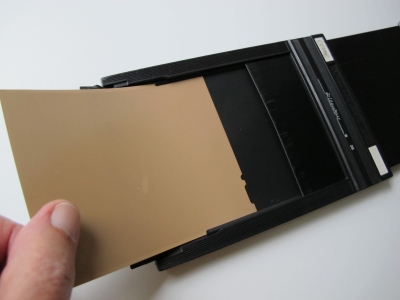

Make sure that the sheet
film slides in between the sliding groves. You do that by the feeling.
Please check and double
check with your fingers to make sure the sheet film is well positioned.
Check by
tilting the negative a bit.
Once the sheet film is in position
push it all
the way up, you may close the hinged slot and push the slide all the way
back into the closed frame.
Make sure the hinged
slot can not be opened
after the dark slide has been pushed back all the way into the holder.
Lock the dark slide by turning the hook
on top of the holder.
After having loaded
the holder make sure to close the sheet film box.
Switch the light on
and you may place the holder on the back of your camera.
After exposure,
Unlock the holder
or slide and remove it from the back of your camera.
Unloading after exposure
in full darkness.
After exposure and
having pushed the dark
slide back into the holder, secured by turning the hook over the
end of the dark slide, you may unlock the holder from the back of
the camera,
Place the holder in de dark tent.
Make sure the tent is light tight. Preferable work in dimmed room,
avoiding direct sunlight.
Draw the dark slide halfway out of
the holder. Next tilt the sheet film with the nail of your finger
and grab the edge of the film to pull the negative out of the
holder.

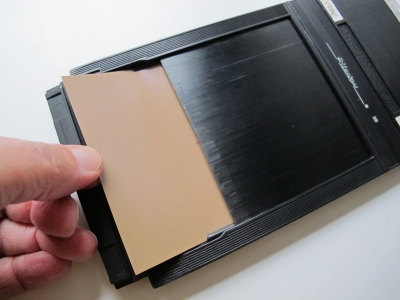
Open
the dark slide grab the negative and pull it out
of the holder.
Tip: Use an empty film package to store
the exposed films temporality before loading them into the developing tank.
Developing the exposed film.
Film developing can be done in a daylight developing
tank, but the film has to be loaded in total darkness. Filling the tank
with film developer and afterwards with water and at least with fixer,
can be done in daylight. The whole developing, washing and fixing
process finds place in the daylight tank. There are lots of websites
which teaches the best way to do that.
Personally I develop in a very practical new designed developing tank
for 4 sheets. Exclusively for 4x5 inch.
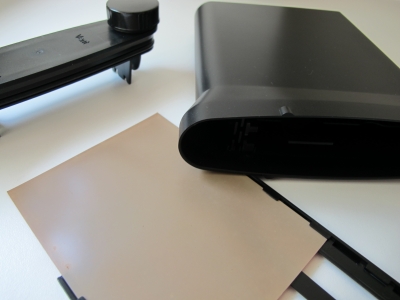
The new designed Stearman's 4 sheet processing tank.
Saves time and money and most of the time a better alternative than
other
huge 6 sheet tanks.
The SP-445 film processing system process up to 4 sheets of 4x5 inch at
the time and uses not more than 475 ml of solution.
My favourite mix is 50 ml Tetenal Ultrafin and 425 ml water. Any other
good mixture would do as well.
No need to wait until you have plenty negatives to start up processing
as 1 to 4 sheets is enough.
It is a great invention and I'm very happy with it.
if you are interested please contact the inventor.
Technical pages
Home Jo Lommen
